
The Bastard Princess and the Altar Cloth
Fortunately, I’ve just finished reading Gemma Lawrence’s The Bastard Princess. I did feel it was less a novel than a literary form of that popular television genre, the drama documentary. The result, though, is that despite its limitations as literature I now feel I understand a lot more about the history of those turbulent times. That turned out especially convenient as last week I went to see the Bacton Altar Cloth at Hampton Court.
What’s the Bacton Altar Cloth and why is it at Hampton Court?
The Bacton Altar Cloth is, as it sounds, a cloth that covered the altar at Bacton Church in Herefordshire. Like a lot of altar cloths, it’s a richly decorated piece of fabric. For over a hundred years it’s been hanging behind glass on a wall of the church because of its age. It was associated with Blanche Parry, who was the Chief Gentlewoman of Elizabeth’s Privy Chamber, who came from Bacton. Only recently it has been identified as being made from fabric cut from a dress.
In Tudor times there were strict, legally enforceable, rules on who could wear what sorts of cloth and the presence of silver thread in the fabric meant that it must have been worn by a very high status individual. The quality of the work and its similarity to dresses shown in contemporary paintings of Elizabeth suggest that the dress would have belonged to the Queen herself and that the fabric was gifted to the church after Blanche Parry’s death.
I was lucky enough to get a very close look at the cloth and to be able to admire the amazing embroidery on it.
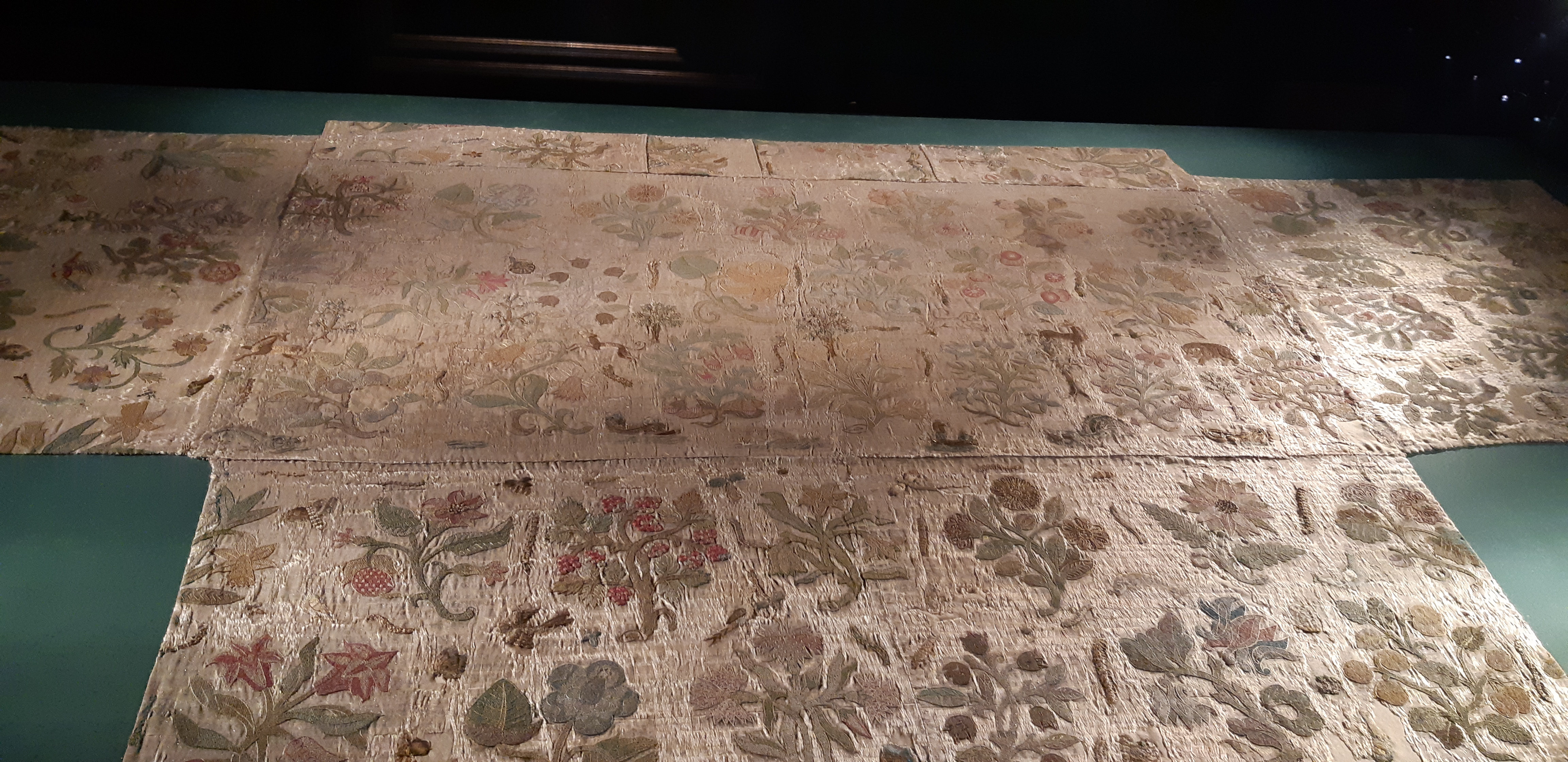

Being able to look at fabric that was almost certainly worn by Queen Elizabeth provides an astonishingly direct link with the past. It made me particularly appreciate the understanding I had got from Gemma Lawrence’s book.
Of course there are lots of other links to Elizabeth at Hampton Court. When I was there we even had an Elizabethan lady talking about them.

I was particularly intrigued by this painting showing Henry with his family, which Lawrence discusses in her book. It’s a completely imagined scene because it shows Edward as a young man and features his mother, Jane Seymour, who died very soon after he was born.
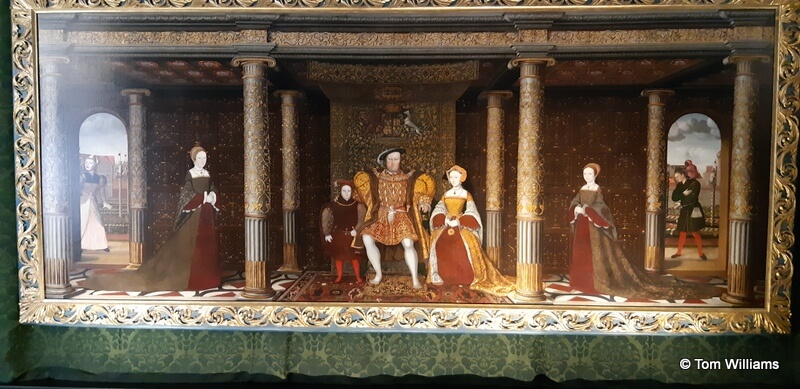
Elizabeth is the figure on the right of the picture. In The Bastard Princess, Lawrence has Elizabeth asking the painter to make sure that the jewellery she is wearing is not too obvious because it might have been seen as treasonous by the king. That made me look very carefully at the figure of Elizabeth.
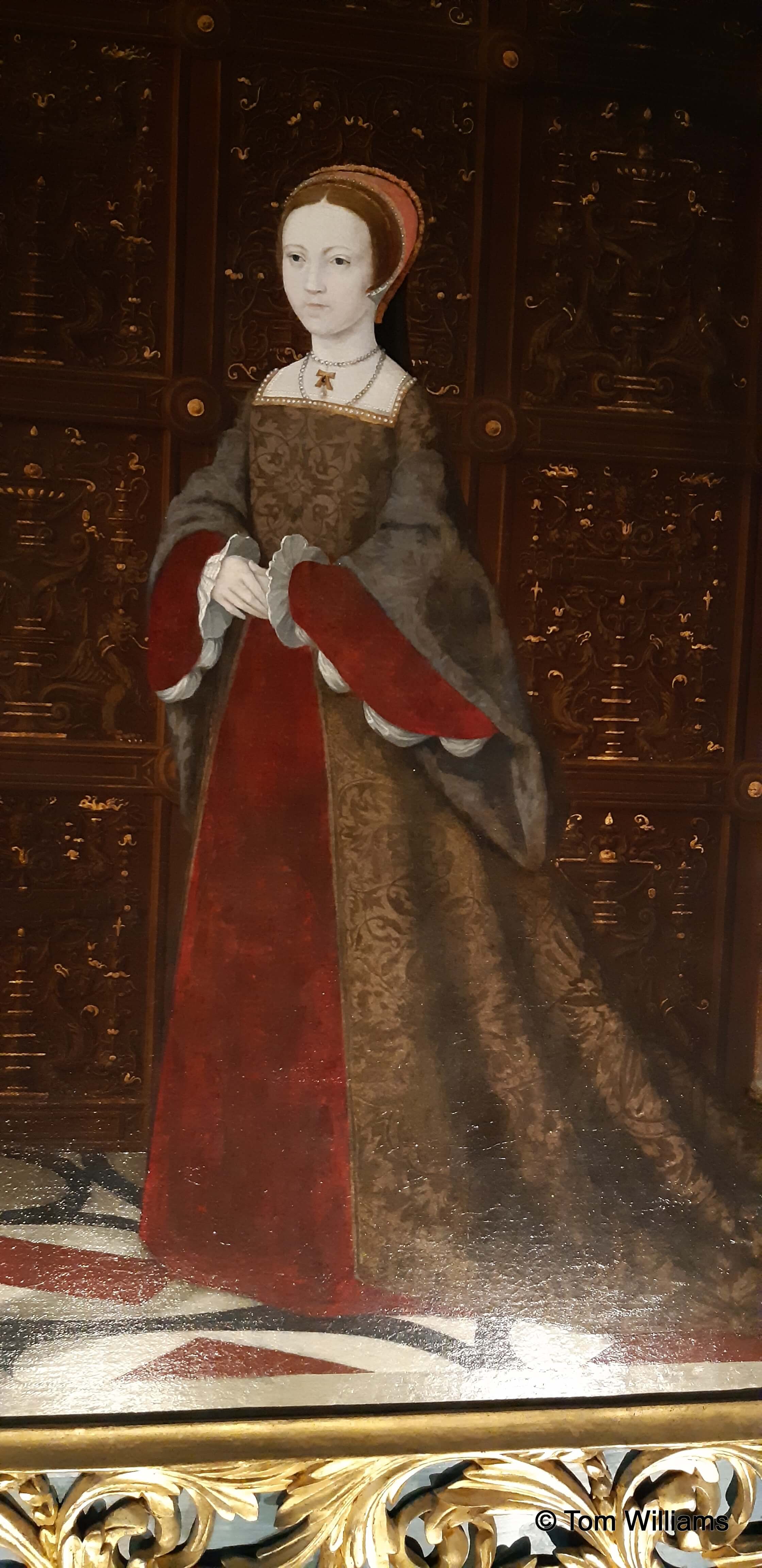
Do you see the necklace? Here’s a closer look.
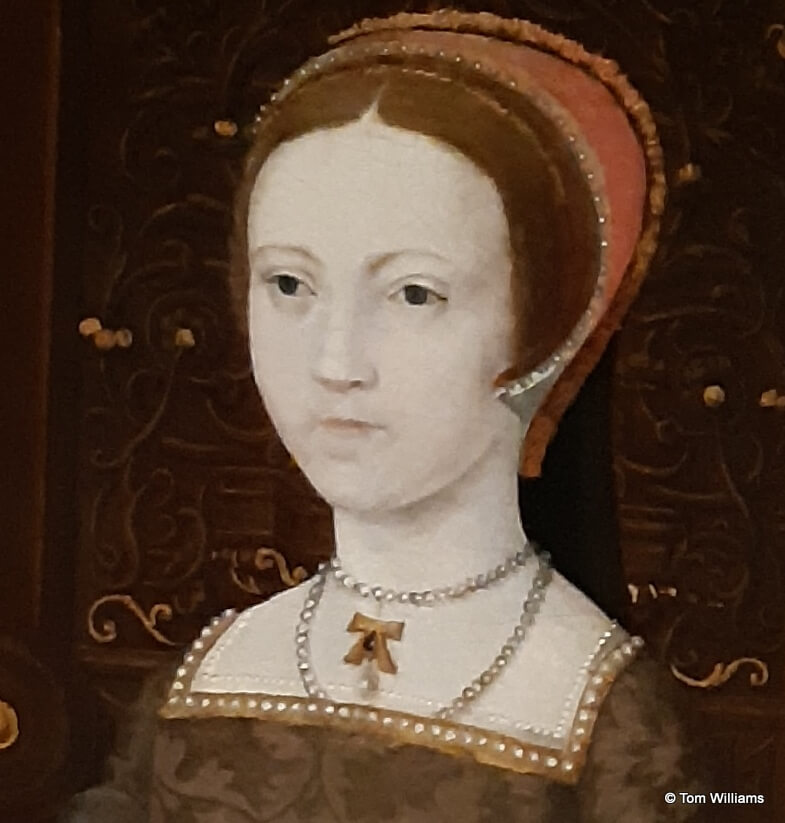
The letter ‘A’ is clearly visible – a remembrance of her mother (in the book it actually belonged to her mother), the woman Henry had executed as a traitor.
Elizabeth’s choice of jewellery says a lot about the woman. She was strong-minded and courageous. (According to staff at Hampton Court she was also short-tempered and could be vicious, aspects of her character that Lawrence only touches on.) Thanks to Lawrence’s book I understood a lot more about the woman and I knew what to look for in that painting.
If you want a readable introduction to the period, I recommend The Bastard Princess. If you want to get a real feel for court life then, you really should visit Hampton Court. If you get the chance to see the Bacton Altar Cloth, do make the effort. It’s on display until 23 February 2020.
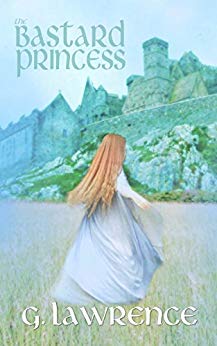
A Word from our Sponsor
If you enjoy historical writing from a rather more recent period, could I point you at my own books? There are three novels about James Burke, a spy in the age of Napoleon. They are first and foremost adventure stories, but you’ll find yourself learning quite a lot about politics and warfare at the time. Another series of three novels (The Williamson Papers) takes a rather more serious look at Britain and its empire at the mid-19th century height of the colonialist enterprise. You can find out more about all my books on my books page on this site or on Amazon.
